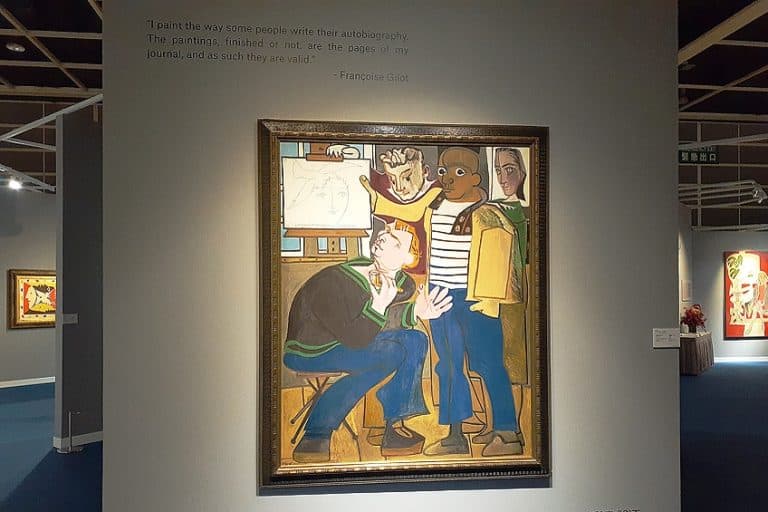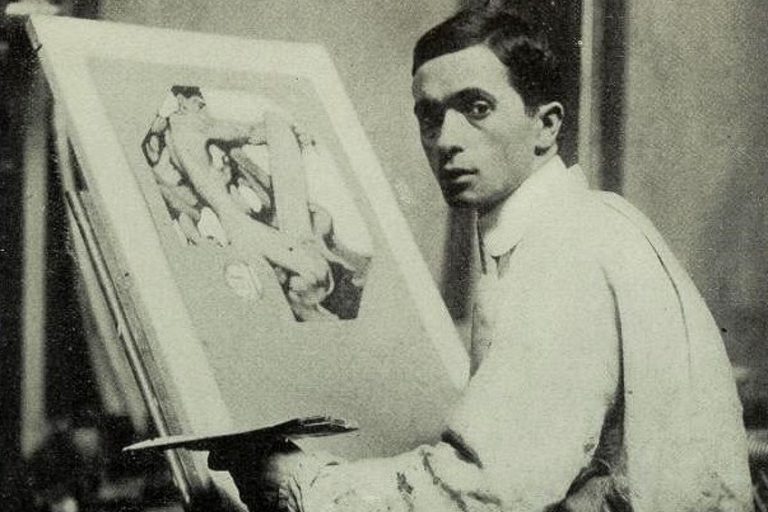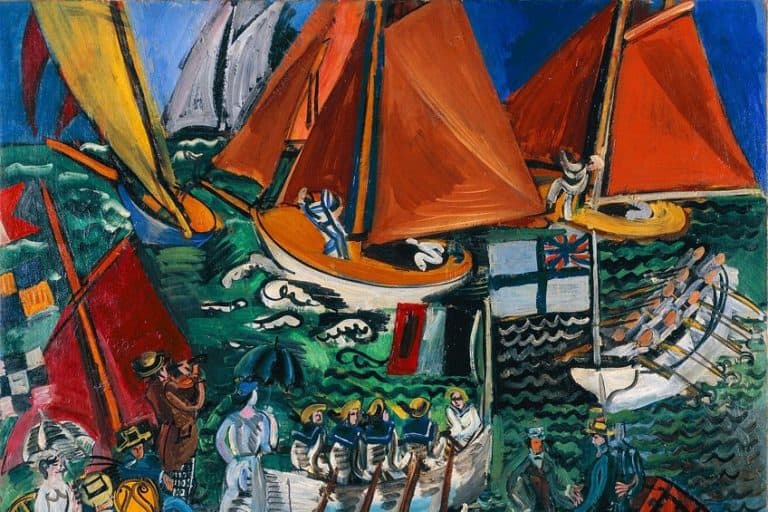Pattern Artists – Introducing the Art of Visual Rhythm
Welcome to the vibrant world of pattern artists, where shapes dance and colors sing in harmonious rhythm! Pattern artists are the magicians of design, weaving intricate tales through the repetition of form and the symphony of hues. From the kaleidoscopic wonders of Islamic geometric patterns to the whimsical chaos of modern abstract arrangements, these artists wield lines and colors with finesse, creating visual feasts that tantalize the senses and spark the imagination. Join us as we unravel the mesmerizing tapestry of pattern artistry, where every line tells a story, and every color whispers a secret!
Table of Contents
Key Takeaways
- Pattern artists utilize repetition to create significant visual impacts and narratives in their art.
- Historical and contemporary artists alike have expanded the role of patterns in art, opening new creative dimensions and dialogues.
- Understanding the aesthetics of patterns and their applications enriches appreciation for pattern artists and their contributions to art history.
The Aesthetics of Patterns in Art
Art has always been a medium to capture the complexities and simplicities of nature and thought, and pattern artists take this challenge to heart by creating works that utilize repetition and motif to generate visual narratives. Through the use of forms, colors, and shapes that repeat across mediums, these artists build a tapestry of rhythm and harmony that invites onlookers into a visual dialogue. The art of pattern involves meticulous crafting of repeated design elements which often symbolizes and communicates cultural stories, histories, or illustrates infinite geometric explorations.
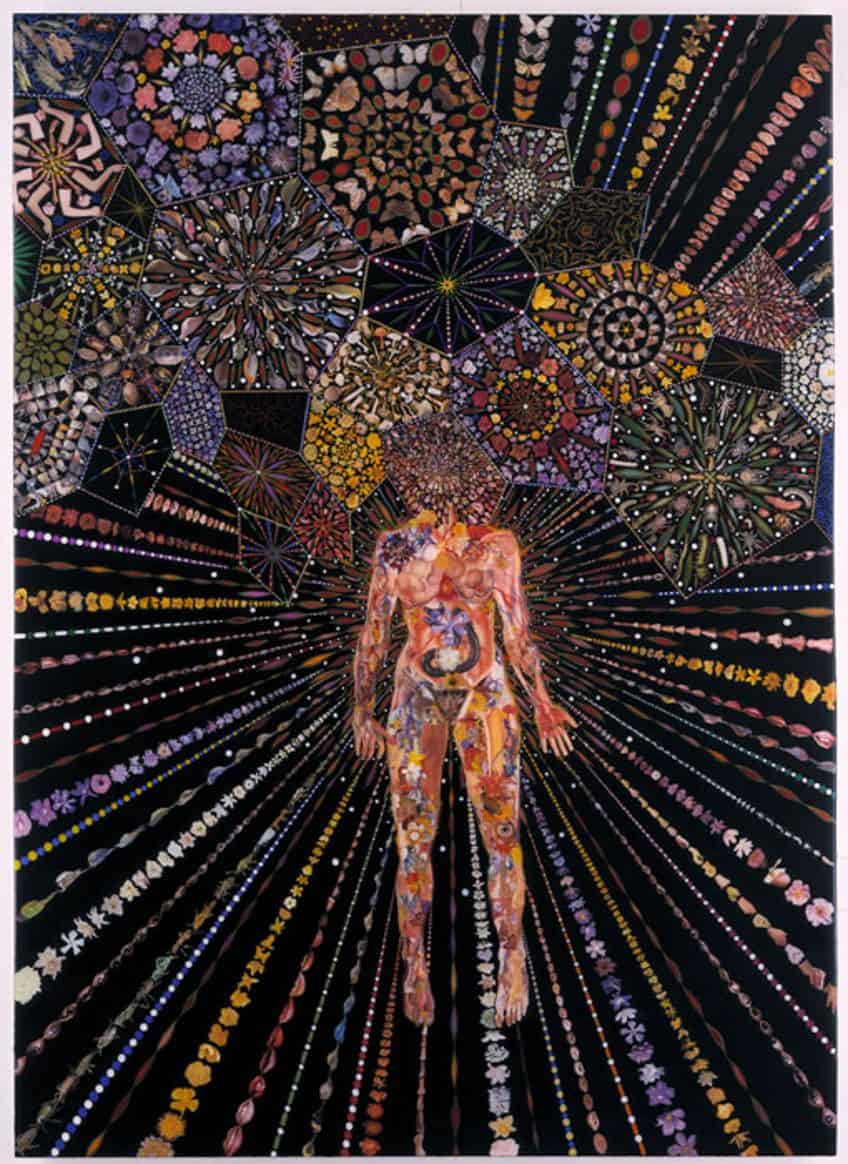
At the heart of the movement, pattern artists, both historical and contemporary, have pushed the boundaries of art by transforming patterns from mere decorative backgrounds to the focal point of their work. Their contributions span from the intricate, golden designs of Gustav Klimt to the bold polka dots of Yayoi Kusama. With each piece, they mark an evolutionary step in the history of art, proving that patterns can possess as much depth and significance as the subjects they once accentuated.
This emphasis on pattern has seen a resurgence in the digital age, with pattern design becoming a central element in various fields of visual aesthetics.
Prominent Pattern Artists and Their Contributions
Exploring the realms of repetition and design, this section sheds light on notable figures whose works have shaped the fabric of pattern art. With distinctive styles and themes, these artists have each contributed uniquely to art’s visual lexicon.

Owen Jones (1809 – 1874)
| Birth | February 15, 1809 |
| Death | April 19, 1874 |
| Place of Birth | London, England |
| Genre of Work | Architectural design, Ornamentation, and Decoration |
Architect and designer Owen Jones achieved renown through his seminal work, The Grammar of Ornament, a comprehensive design manual heralding the significance of decorative principles transcending cultures and civilizations. Jones’s meticulous study of Islamic decoration profoundly influenced Western design paradigms, advocating fervently for the integration of geometric patterns and tessellations.
Through exhaustive research and meticulous documentation, Jones not only underscored the aesthetic allure of pattern art but also fostered a profound cross-cultural appreciation for ornamentation on a global scale.
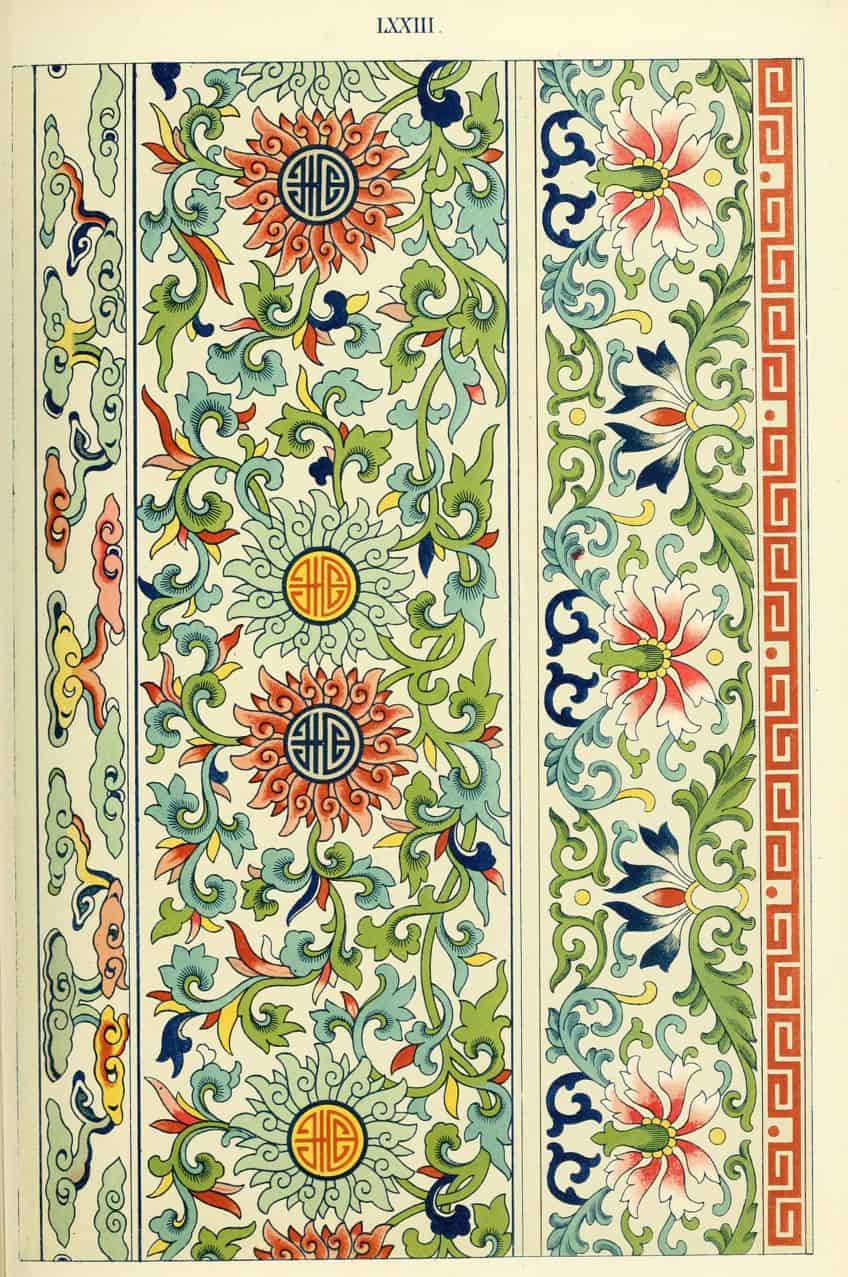
William Morris (1834 – 1896)
| Birth | March 24, 1834 |
| Death | October 3, 1896 |
| Place of Birth | Walthamstow, England |
| Genre of Work | Textile design, Arts and Crafts Movement, and Writing |
William Morris, a pivotal figure in the decorative arts, is celebrated for his intricate patterns prevalent in wallpaper and textile designs, hallmarking the essence of the Arts and Crafts Movement. As a pioneer of this movement, Morris reshaped pattern art by infusing it with organic forms and detailed botanical motifs inspired by nature.
His wallpapers, textiles, and tapestries not only showcase his profound appreciation for craftsmanship but also serve as poignant reflections of his rejection of industrialization, embodying a romanticized portrayal of the natural world woven into repetitive patterns.
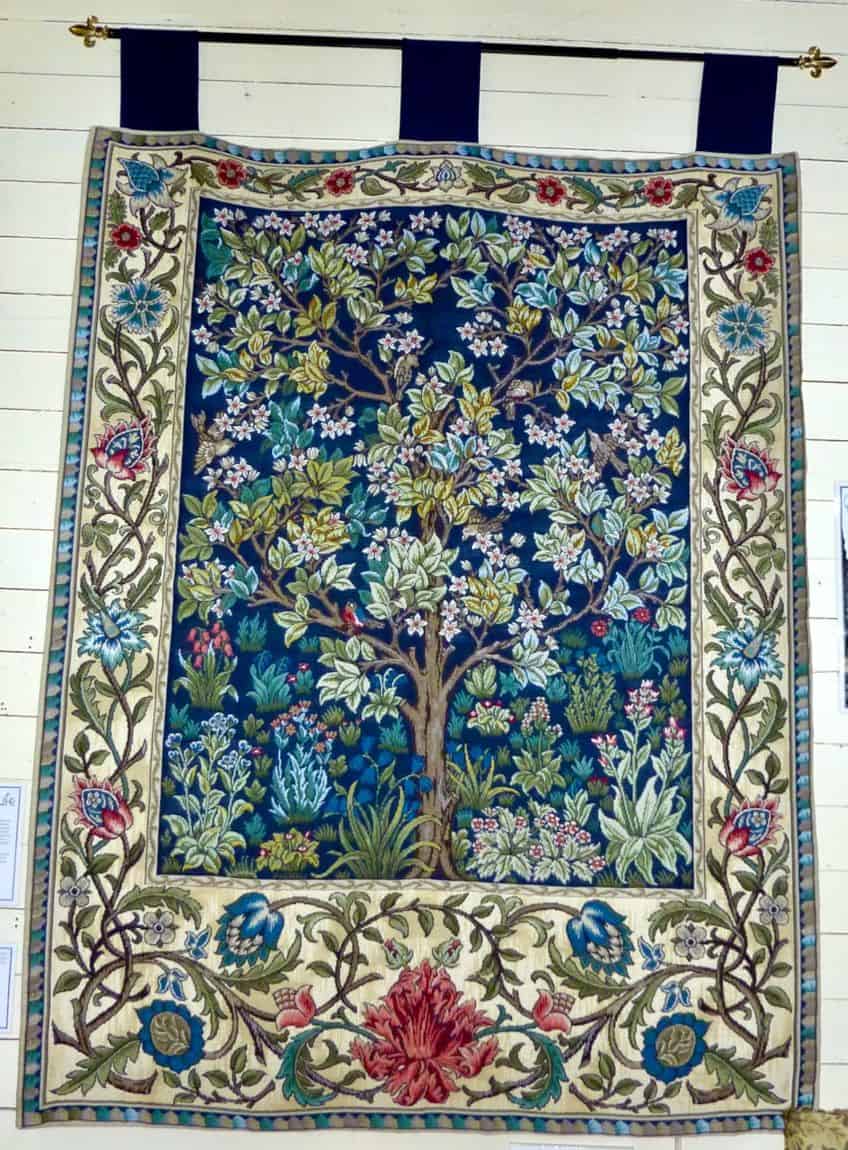
Gustav Klimt (1862 – 1918)
| Birth | July 14, 1862 |
| Death | February 6, 1918 |
| Place of Birth | Baumgarten, Austrian Empire (now Vienna, Austria) |
| Genre of Work | Symbolism, Art Nouveau, and the Vienna Secession movement |
The Austrian symbolist painter, Gustav Klimt, is renowned for his opulent canvases adorned with intricate patterns, a hallmark of his distinct style. His masterpiece, The Kiss, epitomizes his Golden Phase, characterized by the integration of gold leaf and sensuous decorative motifs. Through his richly decorative patterns, often embellished with geometric shapes and intricate gold leaf, Klimt delves into complex psychological and emotional themes.
He invites viewers into a realm of sensuality and mystique while adding layers of symbolism and depth to his oeuvre.
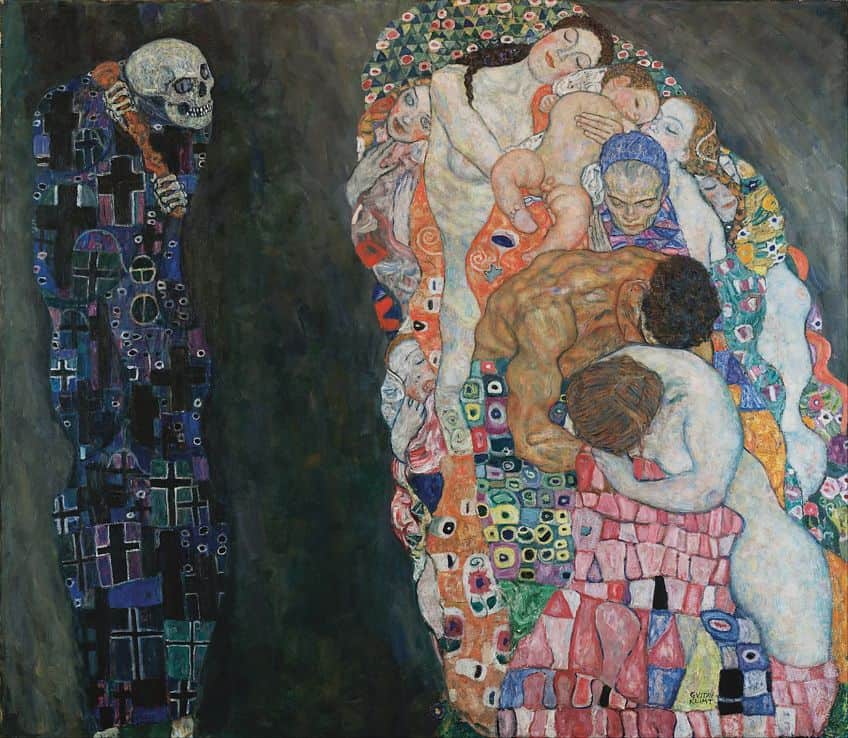
Anni Albers (1899 – 1994)
| Birth | June 12, 1899 |
| Death | May 9, 1994 |
| Place of Birth | Berlin, Germany |
| Genre of Work | Textile Art, Weaving, and Design |
Anni Albers, renowned as a textile designer and printmaker, approached her weavings with a disciplined and intellectual perspective, often centered on geometric abstraction. As a distinguished Bauhaus artist, she skillfully amalgamated traditional techniques with modernist concepts, thus emerging as a seminal figure in propelling textile design into the realm of fine art. Albers’ innovative use of materials and techniques facilitated a profound exploration of color, texture, and structure within her works.
She challenged conventional weaving practices and ignited inspiration among successive generations of artists to reimagine the potential of patterns in art.

Yayoi Kusama (1929 – Present)
| Birth | March 22, 1929 |
| Death | Present |
| Place of Birth | Matsumoto City, Nagano, Japan |
| Genre of Work | Contemporary Art, Surrealism, Pop Art, Minimalism, and Conceptual Art |
Acknowledged for her extensive use of polka dots and nets as motifs in her artwork, Yayoi Kusama infuses her pieces with a recurring pattern to the point of obsession. Her immersive installations, such as the Infinity Mirror Rooms, epitomize her signature style and contribution to the Op Art movement. Through these mesmerizing environments, Kusama invites audiences to immerse themselves in a world of endless reflections and patterns, blurring the boundaries between self and environment.
Her art stands as a testament to the profound impact of repetition and obsession while celebrating the boundless potential of human imagination within the context of contemporary art.

Daniel Buren (1938 – Present)
| Birth | March 25, 1938 |
| Death | Present |
| Place of Birth | Boulogne-Billancourt, France |
| Genre of Work | Conceptual Art, Minimalism, and Contemporary Art |
French artist Daniel Buren has carved out a distinctive identity with his unmistakable 8.7 cm wide vertical stripes, which have become synonymous with his artistic vision. His site-specific installations, scattered across diverse locations worldwide, serve as potent provocations challenging viewers’ perceptions of space and context through the repetitive application of his iconic motif. Buren’s conceptual approach to pattern art delves into the intricate interplay between art, space, and architecture, as evidenced in his iconic installations where vibrant stripes dynamically engage with their surroundings.
It imbues ordinary spaces with a sense of visual dynamism while prompting profound reflections on the nature of perception and space.
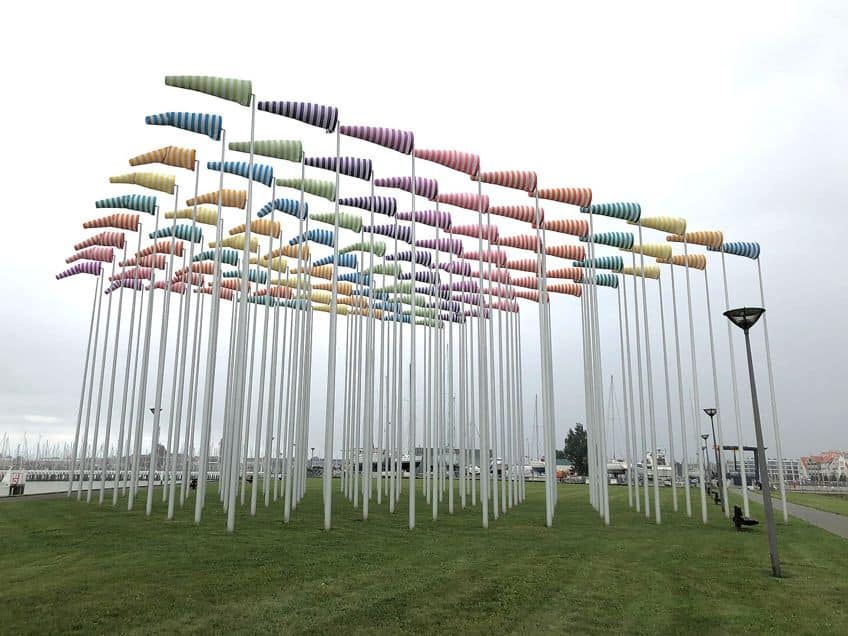
Fred Tomaselli (1956 – Present)
| Birth | May 11, 1956 |
| Death | Present |
| Place of Birth | Santa Monica, California, United States |
| Genre of Work | Contemporary Art, Mixed Media, and Collage |
Contemporary artist Fred Tomaselli is celebrated for his innovative use of mixed media, which yields intricate and psychedelic patterns within his artworks. His compositions frequently feature a fusion of pills and plant matter encased in resin layers, resulting in mesmerizing combinations of organic and geometric forms. Through his mixed-media creations, Tomaselli orchestrates a vibrant tapestry of color and pattern, seamlessly blending collage, painting, and intricate ornamentation.
His kaleidoscopic artworks challenge conventional notions of beauty and order, inviting viewers to explore the chaotic yet mesmerizing beauty inherent in the natural world while pondering the interplay of diverse elements within his intricate visual tapestries.
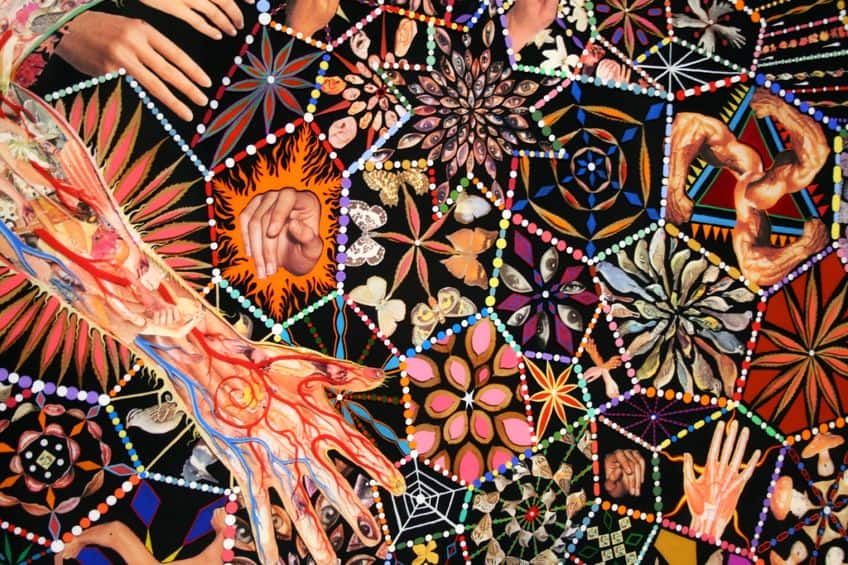
Damien Hirst (1965 – Present)
| Birth | June 7, 1965 |
| Death | Present |
| Place of Birth | Bristol, England |
| Genre of Work | Contemporary Art, and Conceptual Art |
Damien Hirst, a prominent figure in the Britart movement, employs patterns in his renowned series of spot paintings, where colorful dots are meticulously arranged on canvas, challenging conventional notions of art through his methodical and formulaic approach. Through his work, Hirst delves into themes of life, death, and value, forging connections with iconic figures like Andy Warhol through their mutual exploration of serialization and repetition. His provocative artworks delve into the intricacies of mortality, consumerism, and the perpetual cycle of life and death, utilizing symbols such as pharmaceutical packaging and butterflies to craft visually striking yet unsettling patterns that compel viewers to contemplate the fragile and transient nature of existence within the contemporary cultural landscape.

As we conclude our journey through the kaleidoscope of pattern artists’ creativity, one thing becomes abundantly clear: patterns are far more than mere repetitions of shape and color; they are windows into the soul of art itself. From the intricate symmetries of traditional motifs to the bold experimentation of contemporary visionaries, pattern artists continually push the boundaries of what is visually possible. As we bid adieu to this colorful world of shapes and forms, let us carry with us the inspiration to see the beauty in repetition, the magic in symmetry, and the endless possibilities that lie within the patterns that surround us every day. For in the tapestry of life, it is the patterns that make it truly extraordinary.
Frequently Asked Questions
Which Contemporary Artists Are Celebrated for Incorporating Patterns in Their Art?
Artists like Yayoi Kusama are renowned for their pattern-centric artworks; Kusama’s installations featuring polka dots are iconic. Similarly, Damien Hirst’s spot paintings exemplify a clinical, yet colorful exploration of pattern in art.
What Are Some Notable Examples of Patterns in Modern Art?
The use of pattern is evident in the works of Bridget Riley, whose op-art pieces create visual vibrations through precise, geometric repetitions. Ai Weiwei’s “Sunflower Seeds,” an installation of millions of hand-painted porcelain seeds, is another exemplary piece highlighting patterns’ power in art.
Isabella studied at the University of Cape Town in South Africa and graduated with a Bachelor of Arts majoring in English Literature & Language and Psychology. Throughout her undergraduate years, she took Art History as an additional subject and absolutely loved it. Building on from her art history knowledge that began in high school, art has always been a particular area of fascination for her. From learning about artworks previously unknown to her, or sharpening her existing understanding of specific works, the ability to continue learning within this interesting sphere excites her greatly.
Her focal points of interest in art history encompass profiling specific artists and art movements, as it is these areas where she is able to really dig deep into the rich narrative of the art world. Additionally, she particularly enjoys exploring the different artistic styles of the 20th century, as well as the important impact that female artists have had on the development of art history.
Learn more about Isabella Meyer and the Art in Context Team.
Cite this Article
Isabella, Meyer, “Pattern Artists – Introducing the Art of Visual Rhythm.” Art in Context. February 28, 2024. URL: https://artincontext.org/pattern-artists/
Meyer, I. (2024, 28 February). Pattern Artists – Introducing the Art of Visual Rhythm. Art in Context. https://artincontext.org/pattern-artists/
Meyer, Isabella. “Pattern Artists – Introducing the Art of Visual Rhythm.” Art in Context, February 28, 2024. https://artincontext.org/pattern-artists/.



